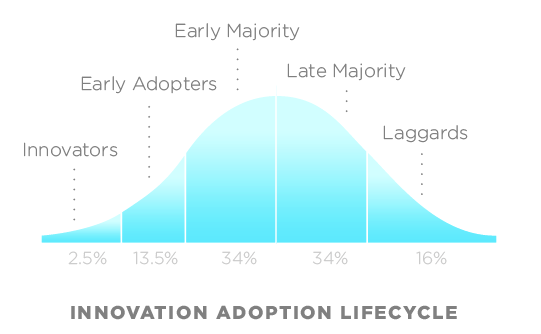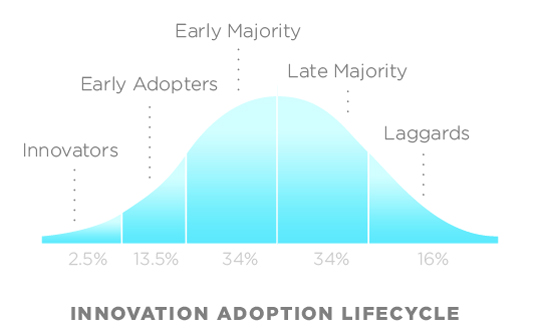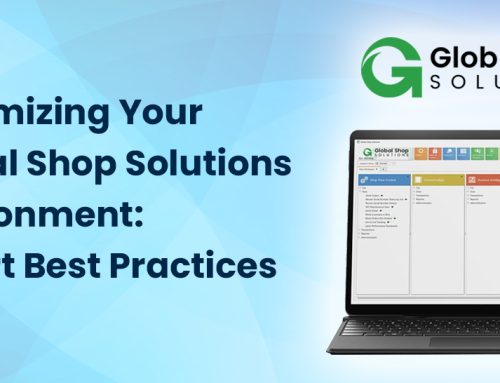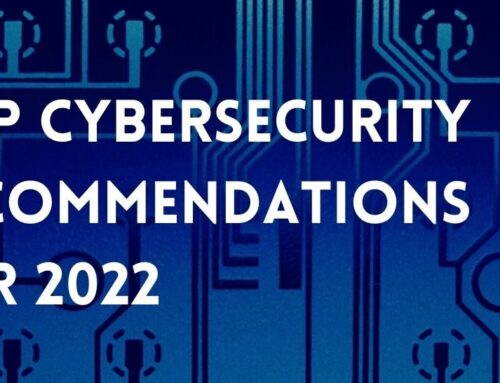Every business needs to be evaluating its progress and also its setbacks. But more specifically if you aren’t evaluating these 3 critical technologies, you’re missing a huge competitive advantage…
In his seminal work, Crossing the Chasm, Geoffrey Moore defined the adoption cycle of a new product or innovation:

This model plays out in stark reality in the technology business as the innovative solutions released today and adopted by leading enterprises will become the commonplace solutions for small and midsize businesses within 3-7 years. We are also witnessing businesses that routinely fall behind and become adoption laggards, this usually creates problems for them as the costs in human capital begin to rise significantly as you try to make large jumps at once. Becoming a laggard is also a significant detractor in finding strong, young talent. How many carpenters want to give up their band saw and go back to a hand saw? The three solutions highlighted in this blog represent solutions that could be considered “Crested”, moving from early majority to late majority adoption. For SMB’s, this is a great time to buy, as the pricing is generally stable, support resources are plentiful and the bugs are ironed out.
As a small business owner, I understand all too well the relentless parade of competing interests for resources. SMB’s need reliable advice that allows them to stay in between “early” and “late” majority adopters and these three solutions are critical and applicable to all businesses.
Hosted VOIP/ UCaaS: With the proliferation of super-fast internet options, Hosted VOIP, also often referred to as Unified Communications as a Service (UCaaS) has become a no-brainer for any company ready to replace their phone system. These solutions are provided right “over the top” of your existing internet pipe, have the features of an enterprise-class phone system and generally save 15-50% over the older technologies (like PBX solutions). One of the best things about these solutions is they make your cell phone an extension of your desk phone (or get rid of the desk phone altogether) via a slick app that allows you to manage all the features of your phone without any special training or knowledge. The leaders in this field are RingCentral, 8×8 and Vonage. However, we believe Microsoft will overtake all three of these solutions in a few years time with Office 365 E5 (also called Skype for Business), which bundles right in with your existing Office 365 solution to make it the ultimate Unified Communications as a Service solution.
Business Intelligence: Businesses are creating more data than ever before, and within this data lies the answers to questions and challenges that can be game-changing. Business Intelligence solutions provide an interface that allows data (from multiple databases) to be correlated and presented in an easily digestible format, with beautiful graphics from pie charts to 3D modeling. The challenge for most businesses is knowing what to look for and where to find it. Enterprises have created entire departments dedicated to mining their data to identify leading trends and correlations that can inform strategic decision-making. For a small or midsize business owner, this level of insight will eventually become more available through artificial intelligence, but this is a prime time to begin leaning into a deeper understanding of your data.
Business Intelligence solutions like Power BI from Microsoft can create dashboards displaying beautiful representations of simple metrics and KPI’s. For example, the average landed cost per customer, pulled from a CRM and accounting database. Or gross profit per average user (perhaps pulled from QuickBooks and operational software) or average cost per callback, pulled from a dispatching software and time tracking software.
With a tool like Power BI, the only limitation to the data you can begin correlating between databases is your imagination. Use deeper insight to drive employee or customer satisfaction, profit per widget or decrease support costs and jump your competition.
Single Sign-On & Multifactor Authentication: Raise your hand if you’re tired of passwords.
Through Microsofts mobility solution bundled with Office 365: Enterprise Mobility + Security E3, organizations can significantly reduce password complexity for their users while increasing security, a rare win-win with security.
Single Sign-On (SSO) basically uses a single log-on for a user to access a dashboard in a web browser. From the dashboard, the user would have access to all of the applications they were supposed to see to do their jobs. The user, therefore, has no need to remember the individual passwords to all the applications they use. From Salesforce to Quickbooks Online to Twitter to over 2,000 other applications, each user has the access that their permissions allow. Depending on permissions, the user can access these anywhere from any device, with an enormous amount of control and flexibility allowed to the organization.
The obvious concern around this is security. If a user has one password that accesses many applications, what if that password is compromised? A multi-factor authentication product allows for the same sort of security everyone is familiar from online banking, forcing the user to provide a one-time code or verify the request through a smartphone app.
The net of all of this? Users no longer need to remember multiple passwords, so they forget them. Users can access all (and only) the applications they need to fulfill their jobs through one “pane of glass”, from anywhere. And to top it off, your environment is more secure than it is today. The rare and coveted win-win.
If you are ready to cross your own business chasm, reach out to Upward to begin discussions on how to stay relevant and avoid becoming a business laggard.







Leave A Comment